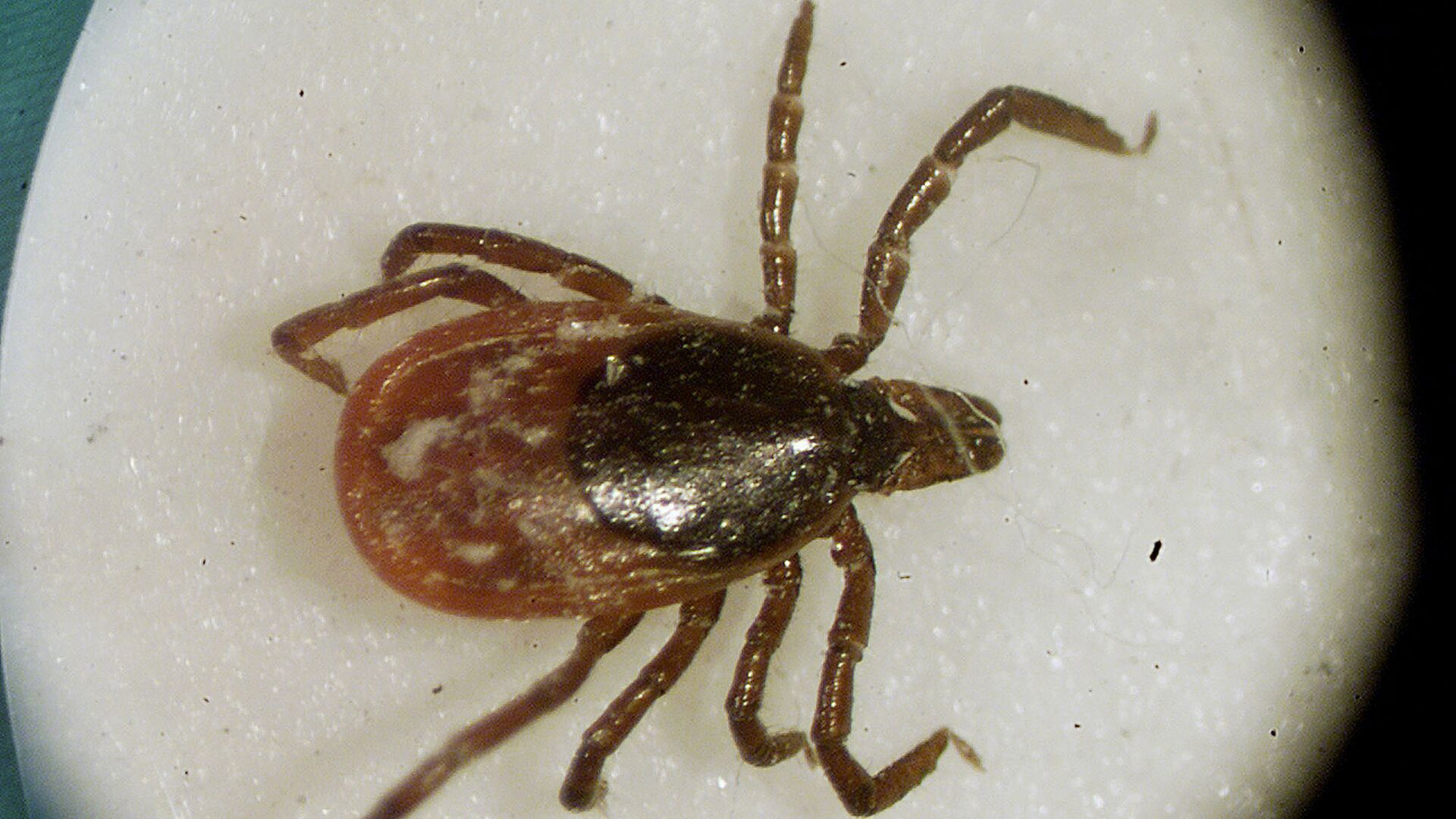High Rate of Ticks Infected With Rare Virus Potentially Lethal for Humans Found Lurking in US Park

© AP Photo / Victoria Arocho
Subscribe
The recent discovery was made during routine testing carried out by the Pennsylvania Department of Environmental Protection (DEP) as part its five-year pilot active tick surveillance program, launched in 2018.
A way higher than normal number of ticks in a park in Pennsylvania, US, have been found to be infected with a potentially lethal virus that may spread to humans.
After researchers at the Pennsylvania Department of Environmental Protection (DEP) had collected 25 ticks from Lawrence Township Recreational Park near Clearfield during routine testing, 23 of the insects (92 percent) were found to be positive for Deer Tick Virus (DTV). The data triggered immediate concerns as the statewide average infection rate for DTV was 0.6 percent last year.
The highest DTV infection rate ever reported in the US was approximately 25 percent.
“The infection rate of ticks sampled from the Lawrence Township Recreational Park is extremely high, Deer Tick Virus transfers very quickly through the bite from an infected tick, and the health outcomes from the Deer Tick Virus are more severe than other tick-borne illnesses typically seen in Pennsylvania,” said Patrick McDonnell, DEP Secretary, in a statement.
“This finding is concerning, and we strongly urge the public to exercise caution and take preventive measures to reduce risk of tick bites and potential infection while DEP continues to address the situation,” McDonnell added.
In samples from the Lawrence Township Recreational Park, 92 percent – 23 out of 25 sampled ticks – were positive for deer tick virus, a type of Powassan virus. #DTV https://t.co/pGtp8YrEod
— LymeDisease.org (@Lymenews) January 22, 2022
The ticks in question feed on the blood of deer living in northeastern states and the Great Lakes region, which also serve as the main spreader of Lyme disease in North America.
A type of Powassan virus, DTV can be transmitted from ticks (Ixodes scapularis) to human as quickly as 15 minutes after a bite.
There are no vaccines to prevent or medicines to treat Powassan viruses.
Deer Tick Virus (DTV) Detected at High Levels in Clearfield County Park: Public Strongly Encouraged To Take Precautions, DEP Will Control, Monitor Ticks
— PA Department of Environmental Protection (@PennsylvaniaDEP) January 20, 2022
➡️ https://t.co/Gn26TrPgMx@PAHealthDept pic.twitter.com/ZipzqNGnls
While some infections are asymptomatic, people often experience symptoms like fever, headache, vomiting, and weakness. In worst-case scenarios, severe diseases may result, such as infections of the brain or its surrounding membranes (meningitis). These can lead to loss of coordination and seizures.
Approximately 1 out of 10 people with severe cases of the disease die, warns the US Centers for Disease Control and Prevention (CDC). Half of the patients who survive the disease may go on to experience headaches, loss of muscle mass, and memory problems.


